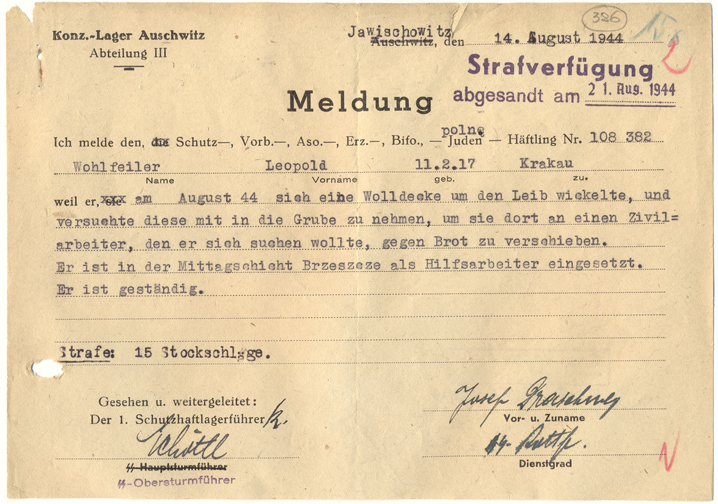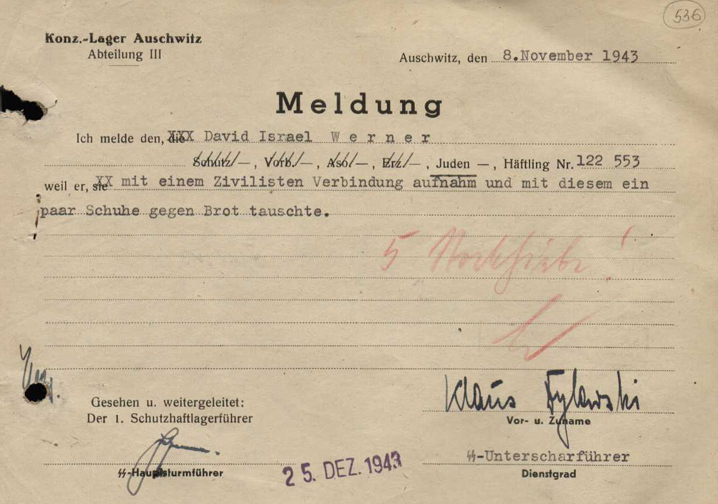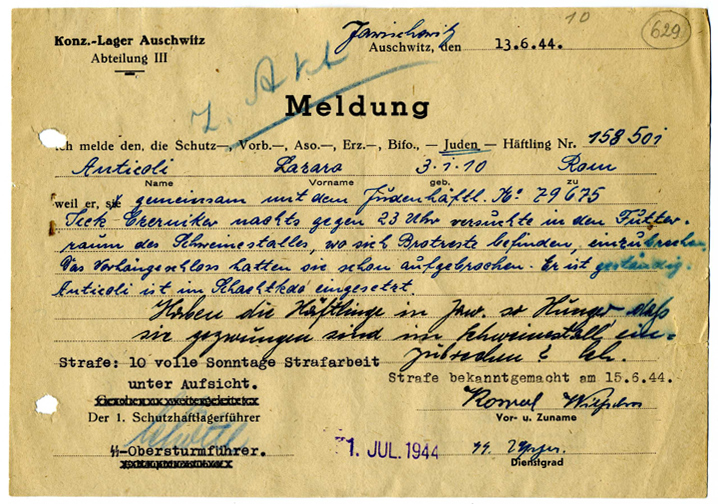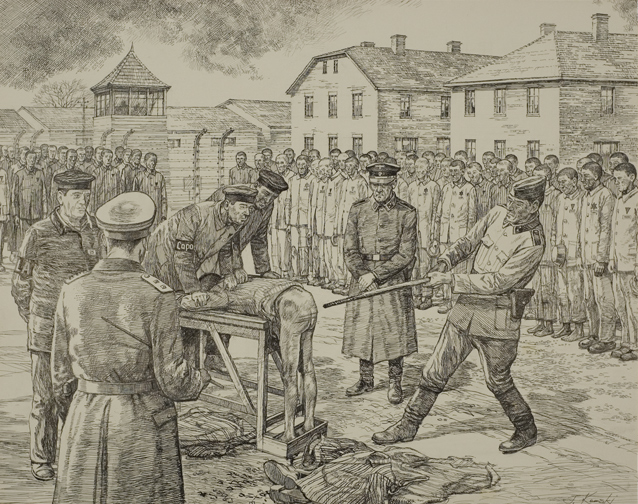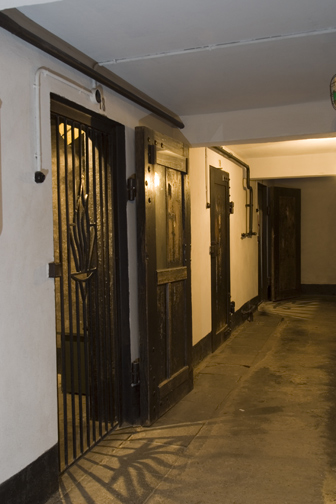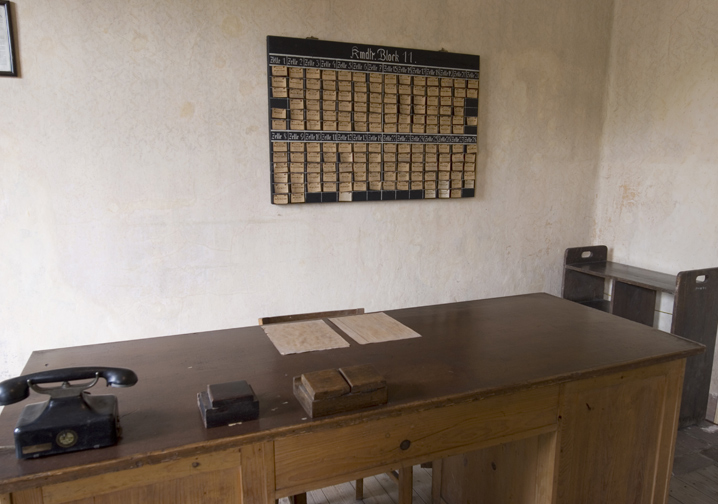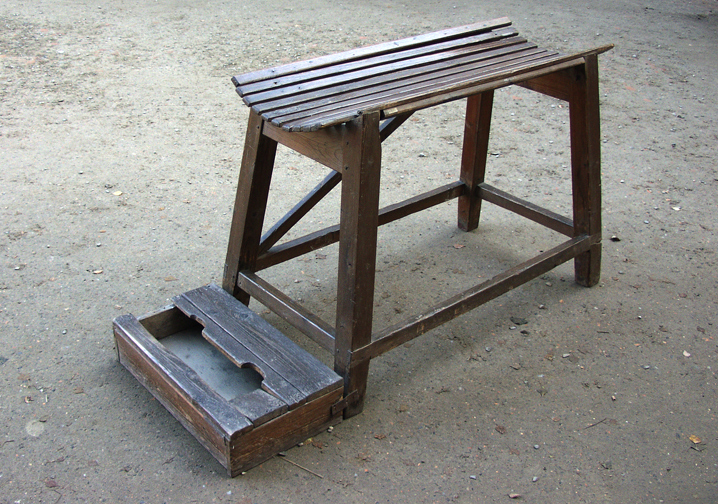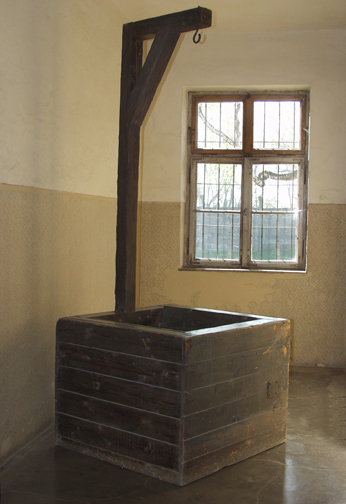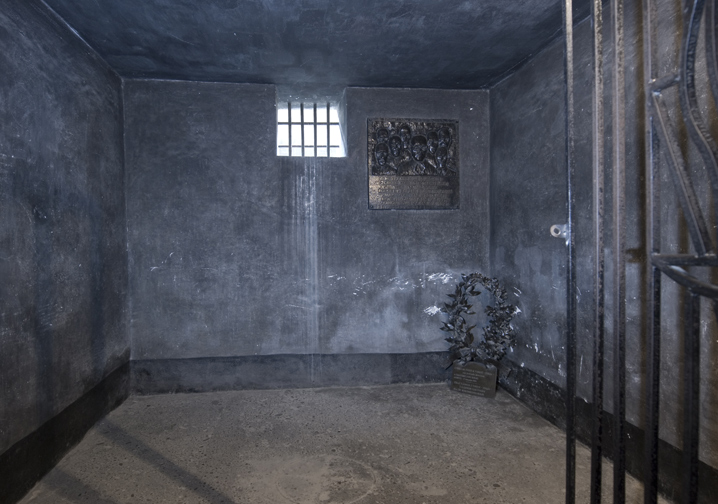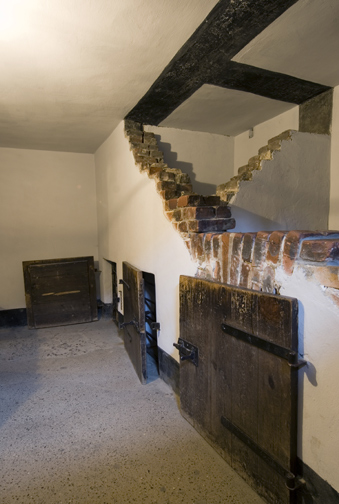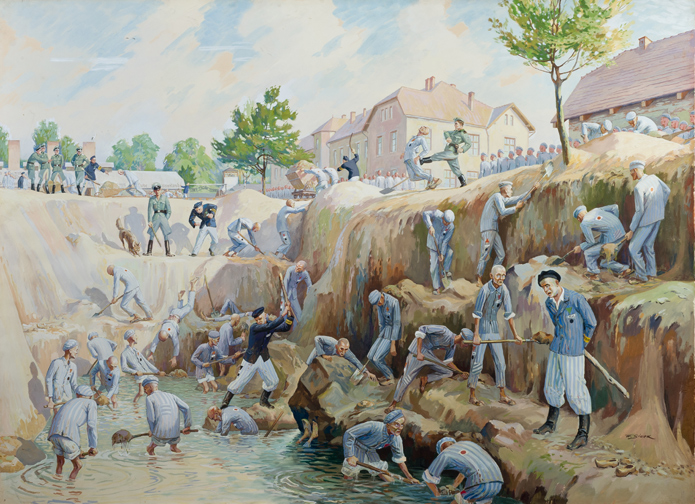Working on the scaffolding, knocking down plaster from block that was to have an added floor, I noticed that a passing SS man had discarded a cigar butt. I looked around to make sure no one was looking, climbed down and picked it up. At that moment I froze, for from behind the corner of the block came [Rapportführer] Palitzsch. He ordered me to show him what I had in my hand. In my fright I forgot to take off my cap. ‘Du Hund Mütze ab’, he roared, then struck me in the face, took down my number and left. At evening roll call my number was called out. The interpreter, Count Baworowski, translated Lagerführer Fritzsch’s words: ‘For evading work and failing to honour the Raportführer he is to receive the punishment of one hour on the post.’ After roll call, the Blockführer took me to Block 2, summoned the block overseer and led me up to the attic, where I was hung. My hands were bound behind my back with a chain and I was made to stand up on a stool while the other end of the chain was tied to a beam, and then they kicked the stool from under my feet. This was agony beyond description and as I hung there, they swung me. When I fainted, they poured water on me. After that terrible hour, I was untied, got kicked in the backside and fell down the stairs. In my collarbones I felt my arms were disconnected, I was unable to move them, and my wrists were wounded by the chain. For a couple of weeks I had to hide, not to fall foul, for I was unable to work. Thanks to the colleagues who looked after me, I survived and got better, though for a year I still felt pain in my collarbones.

